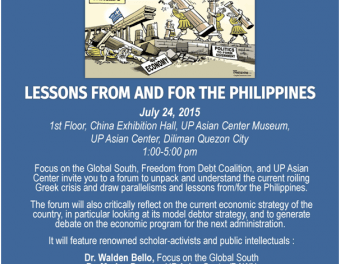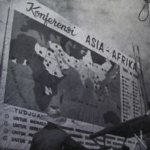by Walden Bello
Originally published on The Nation, 24 September 2008
Many Asians absorb what is happening in Wall Street with a combination of déjà vu, skepticism and “I-told-you-so.” For many, the Wall Street crisis is a replay, though on a much larger scale, of the 1997 Asian financial crisis, which brought down the red-hot “tiger economies” of the East. The shocking absence of Wall Street regulation brings back awful memories of the elimination of capital controls by East Asian governments, which were under pressure from the International Monetary Fund and the US Treasury Department. That move triggered a tsunami of speculative capital onto Asian markets that sharply receded after sky-high land and stock prices came tumbling down.
Treasury Secretary Paulson’s proposed massive bailout of Wall Street’s tarnished titans reminds people here of the billions the IMF hustled up after ’97 in the name of assisting them–money that was used instead to rescue foreign investors.
So Asian governments and financial players are skeptical about Washington’s talk of re-regulating the financial sector, and, although their central banks and sovereign wealth funds are flush with cash, they’re wary about being drawn into the Wall Street maelstrom. Among East Asian official funds, only Singapore’s Temasek and the China Investment Corporation have stepped up to the plate. Temasek pumped over $4 billion into Merrill Lynch a few months ago, but only after driving a hard bargain. CIC invested $5 billion in Morgan Stanley last December but refused the troubled investment bank’s recent desperate plea to increase its share of the firm. Initially seen as a potential savior, the Korean Development Bank turned down the overtures of Lehman Brothers a week before the latter’s historic collapse into bankruptcy.
Trillions of dollars of Asian public and private money are invested in US firms and property, with the five biggest Asian holders accounting for over half of all foreign investment in US government debt instruments. Funds from Asia have become a key prop of US government spending and the middle-class consumption that have become the driver of the American economy. With so much of Asia’s wealth relying on the stability of the US economy, there is not likely to be any precipitate move to abandon Wall Street securities and US Treasury bills.
At home, however, there are growing worries, and consumer advocates, NGOs and academics are demanding more transparency about how much the local banking system is exposed to Wall Street’s toxic assets. In the Philippines , there are calls from civil society groups for the banning of derivatives trading, the return of capital controls and the renegotiation of the country’ massive foreign debt now that the international banks are in a weak position.
There is, moreover, resignation throughout Asia about the inevitability of a deep US recession and its likely massive impact on the East: the United States is China’s top export destination, while China imports raw materials and intermediate goods from Japan, Korea and Southeast Asia to shape into the products it sends to the United States. Despite some talk a few months ago about the possibility that the economic fate of Asia could be “decoupled” from that of the United States, most observers now see these economies as members of a chain gang shackled to one another, at least in the short and medium term.
Greater regional integration is now seen widely as a healthy antidote to a global integration that has run out of control. Some elements of regional economic cooperation are now in place, notably the so-called “ASEAN Plus Three” formation, which unites the Association of Southeast Asian Nations with China , Korea and Japan in a mechanism to facilitate bilateral exchanges of funds in the event of a financial crisis. Eventually this arrangement could become a full-blown regional monetary fund.
On the other hand, NGOs and social movements, while in theory supportive of integration, distrust a process monopolized by governing elites they view as unaccountable. Active participation of civil society, they insist, must be central to the crafting of such regional formations.







